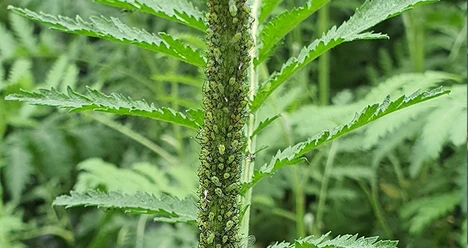Plant-mediated interactions between organisms

Plants play an important role in most terrestrial ecosystems, in which they serve as the basal resource for most of the higher trophic levels in the food chain. Plants are mostly sessile, and therefore, in contrast to most animals, have very few means to physically ‘fight or flight’. This does, however, not mean that plants have evolved to be sitting ducks, waiting to be devoured by anything that passes by. In fact, most plants have evolved a broad range of structural adaptations and chemical compounds to interact with their living environment. These can be used to keep away or deter antagonists, but also to keep close or attract beneficial organisms. Plants are highly plastic in both their structural and chemical properties, and hence, the environment plays an important role in a plant’s physical shape or health status. In the ‘Plant-mediated Interactions’ theme, we investigate how both biotic (e.g. multiple attackers) and abiotic factors (light pollution, climatic variation, pesticides) affect phytochemistry and plant growth (i.e., quality and quantity), and how the consequential changes in these properties affect other interactions occurring on the plant.